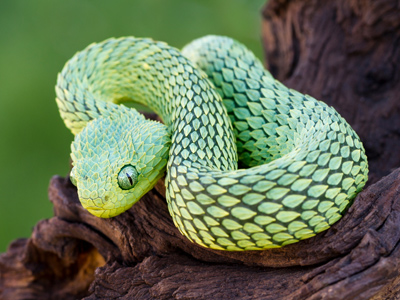
Ask the AI Tutor
Need help with Growth? Ask our AI Tutor!
AI Tutor - Lucy
Connecting with Tutor...
Please wait while we establish connection

A snake needs to shed its skin regularly as it grows.
Growth
Plants and animals grow in different ways. This KS2 Science quiz explores growth, from tiny seedlings becoming trees to living creatures developing as they age.
1 .
Which of the following living organisms grows?
A chick
A runner bean plant
An adult human
All of the above
All living organisms grow! Growth is one of the life processes. Adults continue to grow, hair and nails for example - they just don't (usually) grow taller!
2 .
When do living organisms stop growing?
When they reach a particular height
When they die
When they are old
When they don't get enough rest
Living organisms only stop growing at death
3 .
In order to grow well, what does the human body need?
Water and exercise only
Food, exercise, water and rest
Food, vitamin tablets and medicine only
Food only
Without food, water and rest we would soon die
4 .
Which of these objects is not made of materials which were once alive?
A wooden spoon
A copper kettle
Leather gloves
A woollen coat
Wool and leather come from animals and wood comes from trees - these materials come from living organisms
5 .
In order to grow well, what do plants need?
Water only
Light only
Light, water, warmth and carbon dioxide
Plant food and soil only
Minerals from the soil help plants to grow as well as possible
6 .
Which of the following is not made up of cells?
A rose
A marble statue
A piece of cotton wool
A melon
Marble is made of tiny particles, not cells
7 .
Living organisms grow by producing what?
Cells
Blood
Energy
Food
Cells are also produced to repair a living organism when it has been injured or damaged
8 .
Which living organism needs to shed its skin regularly as it grows?
Human
Coconut palm
Rabbit
Snake
The outer skin of a snake is dead and cannot grow - as the snake grows, a new layer of skin forms underneath and the old skin is shed. Many insects regularly discard their exoskeletons for the same reason
9 .
What tiny things are living organisms made from?
Cells
Plants
Microorganisms
Minerals
All living organisms are made up of cells. Even once-living materials such as wood, wool or leather are still made up of cells
10 .
In order to see most cells, what must you use?
A microwave
A telescope
A microscope
A mirror
Only a few cells are large enough to be seen with the naked eye
**Unlimited Quizzes Await You! 🚀**
Hey there, quiz champ! 🌟 You've already tackled today's free questions.
Ready for more?
Ready for more?
🔓 Unlock UNLIMITED Quizzes and challenge yourself every day. But that's
not all...
not all...
🔥 As a Subscriber you can join our thrilling "Daily Streak" against other
quizzers. Try to win a coveted spot on our Hall of Fame Page.
quizzers. Try to win a coveted spot on our Hall of Fame Page.
Don't miss out! Join us now and keep the fun rolling. 🎉
**Unlimited Quizzes Await You! 🚀**
Hey there, quiz champ! 🌟 You've already tackled today's free questions. Ready for more?
🔓 Unlock UNLIMITED Quizzes and challenge yourself every day. But that's not all...
🔥 As a Subscriber you can join our thrilling "Daily Streak" against other quizzers. Try to win a coveted spot on our Hall of Fame Page.
Don't miss out! Join us now and keep the fun rolling. 🎉






